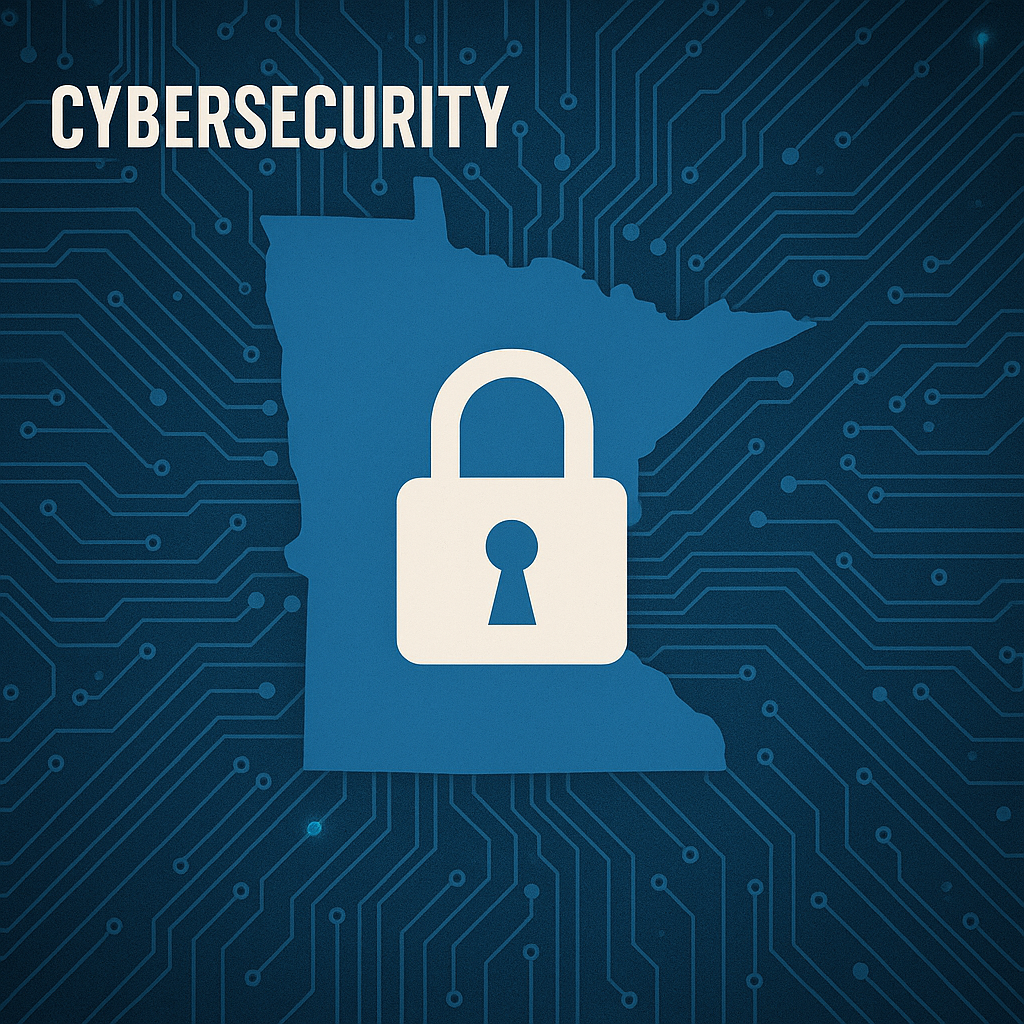“It wasn’t a matter of if, but when.” That’s how one cybersecurity analyst described the catastrophic cyber crisis that recently brought critical systems in Minnesota to their knees. From water treatment plants to emergency response networks, the ripple effects were swift—and terrifying.
As the dust settles, a stark truth remains: Minnesota is not alone. It’s just the canary in the coal mine for a much larger, nation-wide vulnerability. The United States is facing a cybersecurity crisis, and our critical infrastructure is the weakest link.

🚨 The Attack: What Happened in Minnesota?
On July 17, 2025, a coordinated ransomware attack infiltrated multiple public sector systems across Minnesota:
- 9 hospitals in the Twin Cities had to cancel surgeries and divert ambulances.
- The state DMV shut down completely, halting vehicle registrations for five days.
- Water treatment facilities in two counties were compromised—forcing temporary boil water advisories.
- 911 services experienced outages in three regions, creating life-threatening delays.
The malware—believed to be a variant of LockBit 3.0—encrypted critical systems and demanded a $4.8 million ransom. Investigators suspect the attack originated from a state-sponsored threat group, possibly linked to actors in Eastern Europe.
This wasn’t a one-off. This was a multi-vector, strategic incursion—targeting outdated systems, poor network segmentation, and inadequate patching cycles.
📉 The Bigger Picture: America’s Infrastructure at Risk
Minnesota’s story is part of a frightening trend.
- Over 70% of U.S. cities and counties have experienced at least one cyberattack since 2020.
- 93% of water utilities in the U.S. still use outdated operating systems, per the Environmental Protection Agency (EPA).
- The average cyber defense budget for local governments is under 1.8% of total IT spending.
In contrast, ransomware groups are operating like well-funded tech startups:
- Dedicated R&D divisions
- 24/7 “customer support” for victims
- Access to zero-day exploits on darknet marketplaces
We’re bringing a knife to a digital gunfight—and the consequences are becoming deadly.
⚙️ Why Infrastructure is So Vulnerable
Unlike banks or tech companies, infrastructure operators face unique challenges:
- Legacy Systems
Water systems, grid controllers, and emergency networks often run on software from the 1990s. These aren’t designed for today’s threat landscape. - Lack of Cyber Talent
Small municipalities can’t afford top-tier infosec pros. Many rely on general IT staff with limited cybersecurity training. - Fragmented Responsibility
No central body governs infrastructure cybersecurity. Each agency is left to its own devices—literally. - Low Visibility
Most OT (operational technology) systems weren’t built to be monitored. Hackers can lurk for months before being detected.
💣 The Human Cost of this cybersecurity crisis
This isn’t just about computers. It’s about people’s lives.
- A Minnesota man suffered a heart attack while paramedics were rerouted due to a 911 outage. He survived—but only just.
- Thousands of rural residents drank unsafe water for hours before boil notices went out.
- Families missed critical DMV appointments that delayed medical travel.
When critical systems go dark, vulnerable communities suffer most.
🧩 What Needs to Change—Now
This cybersecurity crisis should be a national wake-up call. Here’s how we can respond:
1. Federal Funding for Local Cyber Resilience
Congress must expand DHS’s State and Local Cybersecurity Grant Program, not just in dollars but in scope—covering OT-specific protections and mandatory cybersecurity audits.
2. National OT Security Standards
We need a NIST-equivalent framework for critical infrastructure. Voluntary guidelines aren’t enough.
Compliance should be as mandatory as physical safety checks.
3. Cybersecurity-as-a-Service (CaaS) for Municipalities
Centralized, federal or state-supported teams that provide live monitoring and threat response for local agencies—especially in towns that can’t afford their own.
4. Cyber Insurance Reform
Incentivize better practices through structured premiums: lower rates for patch management, MFA, network segmentation, etc. Mandate insurance for key sectors.
5. Talent Pipeline Programs
Launch dedicated infrastructure cyber training under public-private partnerships—think “Teach for America,” but for OT cyber defense.
🔍 A Warning—and an Opportunity
Minnesota’s crisis reveals a chilling vulnerability. But it also reveals a path forward.
Cybersecurity in the U.S. can no longer be reactive. It must be proactive, funded, and embedded into national policy. We must stop treating infrastructure as a secondary concern in cybersecurity conversations.
This isn’t about saving money. It’s about saving lives.
📢 Final Thoughts
If you’re reading this and you:
- Work in government: Push for audits and updated protocols
- Work in tech: Volunteer, consult, or build tools for public systems
- Work in cybersecurity: Focus on OT, not just IT
The next Minnesota could be your city. Your grid. Your water. Your family.
Let’s make sure this wake-up call turns into real action—before it’s too late.
References
- Center for Internet Security. (2023). Cybersecurity for State and Local Governments.
- Environmental Protection Agency. (2023). Cybersecurity Best Practices for the Water Sector.
- U.S. Department of Homeland Security. (2024). State and Local Cybersecurity Grant Program.
- National Institute of Standards and Technology. (2024). Cybersecurity Framework for Critical Infrastructure.
- Cybersecurity & Infrastructure Security Agency (CISA). (2023). StopRansomware: LockBit 3.0.
- Microsoft. (2024). Digital Defense Report.
- Minnesota IT Services. (2024). Cybersecurity Initiatives.
- Government Technology. (2023). Cybersecurity Trends in Local Government.
- Sahan Journal. (2023). Cybersecurity and Education in Minnesota.
Your next read: Best Cybersecurity Courses in 2025 (Compared & Ranked)
